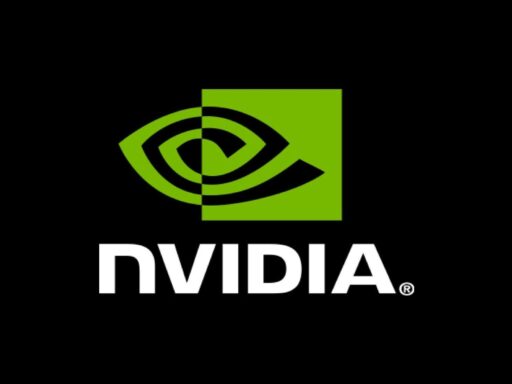We’ve all had that moment: AI spits out something that looks right… but isn’t. Maybe it flubbed a legal clause. Misread a chemical formula. Or hallucinated five sources that don’t exist. Problem is, in fields like medicine, law, and science—being “almost right” still means being wrong. That’s where OpenAI’s new o1 model enters the conversation.
If GPT-4o was built for fast talk, o1 is built for deep thought. This isn’t just another large language model dropping clever sentences. It’s a whole new class. Think less “predict text,” more “walk through logic like a chess master.” OpenAI’s o1 is designed not to impress you with flair—but to back every answer with careful, structured reasoning.
And this shift matters more than people realize. As we rely on AI to handle life-changing decisions, from cancer diagnoses to criminal defense, we need systems that can think through problems—not guess at them. The o1 model wasn’t made to entertain. It was made to decide.
Overview Of The O1 Model: A Leap In Logical AI
O1 isn’t a flashy upgrade. It’s a fundamental shift.
In a space crowded with “fast and fluent” models, o1’s job is to slow down and get it right. This model is trained to think—not just talk. It uses what researchers call structured reasoning pipelines, mapping out multiple steps before committing to any answer.
To break it down:
- It’s built around logic-first architecture—meaning it plans out its thought process before generating output.
- Its goal is exact thinking: less “vibe,” more verification.
- It’s trained specifically for domains where each step needs to be justified—math, science, law, code.
The result is AI that doesn’t just talk smart—it actually thinks systematically, ranking high in trust and consistency.
While models like GPT-4o might beat it in speed, o1 beats them in depth. Think courtroom over cocktail party. This is the AI you call in when the stakes are real—and one word too many could blow the case.
Why Logical AI Matters
Here’s the blunt truth—the difference between structured AI and freestyle AI is the difference between a co-pilot and a liability.
We live in a world where:
– Hospitals are running diagnostics with language models.
– Soldiers rely on AI for battlefield strategy.
– Investors move millions based on model projections.
When stakes are high, hallucinations aren’t just bugs. They’re failures. And until now, even the best models fumbled when tasks demanded solid multi-step reasoning.
The o1 model flips that script.
Here’s what makes it critical right now:
| Problem | What o1 Changes |
|---|---|
| Hallucinated facts | Uses chain-of-thought logic to double-check sources before answering |
| Inconsistent decision paths | Maps decisions step-by-step, reducing contradictions |
| Weak performance in STEM fields | Outperformed GPT-4o in coding, math, and biology tasks |
According to internal tests, o1 scored 83% on the American Invitational Mathematics Examination (vs. GPT-4o’s 13%). With re-ranking, it reached 93%. That’s not just a tweak—that’s a transformation in cognitive AI performance. [See report here using this anchor text: OpenAI’s o1 model](https://openai.com/research/o1-preview)
The difference is easy to explain: o1 doesn’t guess. It reasons. And in medical diagnostics or legal interpretation, that skill may be the one line between justice and malpractice.
OpenAI’s Vision For The Future Of AI Reasoning
OpenAI’s strategy isn’t complicated: build AI that can explain itself. O1 is their move toward “interpretable intelligence,” where models know what they’re doing—and can prove it.
This means:
– Expanding AI systems with transparent logic trails—where every answer shows its steps.
– Prioritizing decision integrity—eliminating shortcuts that lead to faulty outputs.
– Designing for uptime in high-consequence environments: law, biotech, public safety.
This also changes how AI is evaluated. It’s not just about fluency or creativity. It’s about intellectual discipline.
Here’s the wild part: O1 isn’t even OpenAI’s final vision. Their next leap—nicknamed the “o3” series—is already scheduled for 2025. But o1 sets the baseline. A model that doesn’t just mimic thought, but builds it.
So, when you hear someone pitching the next “smart AI assistant,” ask: Can it show its math? Can it defend its logic? O1 doesn’t just say “yes.” It shows you the receipt.
Reinvented AI Logic for Natural Language Processing
People want answers that make sense, not just words that pass a grammar check. That’s where OpenAI’s o1 model steps in—to rethink how language models do reasoning, not just regurgitate facts.
Unlike its flashier cousins built for speed, the o1 model uses something called chain-of-thought processing. Think of it like this: instead of blurting out the first answer it finds, o1 walks through each step of its reasoning internally—much like how a lawyer might break down case law before giving you legal advice.
This isn’t just a cosmetic upgrade. The model rewires how natural language is processed, lining up logical steps before delivering a conclusion. That’s critical when conversations dive deep or when a chatbot is asked to untangle contract clauses or debug nested code.
And the results back it up. Testing shows o1 scored 83% on the AIME math reasoning exam—and when reranking methods were used, it crushed it with 93% accuracy. That’s compared to GPT-4o, which hardly broke double digits on the same benchmark.
This logic-aware architecture changes how conversational AI holds up in real-world dialogue. Instead of tripping over complexity, it handles ambiguity like a human reasoning through uncertainty—carefully, step by step.
For enterprise NLP tools, healthcare decision trees, or even chatbot systems dealing with legal or ethical boundaries, this marks a pivot in performance expectations. We’re no longer asking “Can AI talk?” We’re finally asking “Can AI think it through?”
Enhanced Interpretability and Model Transparency
One of the biggest hurdles in AI has been the black box syndrome—outputs appear like magic, but no one can explain how they were generated. With OpenAI’s o1 model, that curtain is getting pulled back.
This system doesn’t just give you an answer. It flags the steps it took to get there. Whether it’s breaking down lines of legal logic or walking through protein folding simulations, o1 surfaces its reasoning layers so users and auditors can follow its train of thought.
That matters big time for sectors where trust and compliance aren’t optional. Financial firms audit transactions down to the decimal. Healthcare systems demand explainability for every drug interaction suggestion. And legal institutions need arguments that hold up under scrutiny.
With an extended 128,000-token context window and more deliberate output generation, traceability isn’t just a feature—it’s a framework. Some enterprise partners now use it to monitor internal decision audits and improve model validation procedures during sensitive case analysis.
Focus on Model Efficiency and Reliability
Speed used to be king in AI—but reliability just stole the throne. OpenAI’s o1 model makes a deliberate trade: it slows down output to “think things through” in a way earlier systems just didn’t bother with.
That means there’s a slight lag when you task it with something simple. It might over-analyze before telling you what 2+2 equals. But when problems sprawl across multiple domains—like debunking internet health myths mixed with drug biology and legal precedent—its precision shines.
That “thinking phase” comes at a cost, literally. Depending on the version, output tokens can run up to $600 per million. Compare that to o1-preview at $60 per million, and it becomes clear the market is being asked: do you want fast and cheap, or accurate and accountable?
For researchers in law, engineering, or science—where a bad answer isn’t just useless, it’s dangerous—this tradeoff is actually a bargain.
- Developers: GitHub Copilot integrated o1-preview, citing a 50% drop in debugging time.
- Scientists: o1 is solving quantum optical equations many PhD holders can’t touch.
- Security teams: With fewer than 0.17% harmful outputs detected in stress tests, it’s already replacing human filters in sensitive domains.
This isn’t your everyday chatbot. It’s a reliability-first system designed to solve when “close enough” simply won’t cut it.
Legal Analysis
The legal world isn’t built on vibes—it moves on precedent, nuance, and logic forests where one misstep tanks a case. OpenAI knew this when designing o1, and its rollout into legal analysis proves the model wasn’t just optimized for Silicon Valley demos.
Thomson Reuters ran structured comparisons between o1, GPT-4o, and legal clerks on logic puzzle performance and legal brief summarization. o1 didn’t just match expert reviewers—it outperformed them in identifying flaws in multi-paragraph arguments.
Where legacy models often threw up hallucinations or skewed citation relevance, o1’s chain-of-thought architecture allowed it to dissect LSAT-style problems and statute clauses with minimal drift. Even seasoned attorneys noted the model’s ability to identify case-breaking contradictions buried three exhibits deep into sample filings.
Imagine automating due diligence without skipping over landmine clauses. That’s where o1 is already being used—not to replace paralegals, but to accelerate case assembly, contract revision, and legal logic verification at scale.
This also opens doors for jurisdictions grappling with resource shortages or public defenders overloaded with caseloads. A model that thinks like a 3L law student with perfect memory could rebalance access to fair representation.
Advancements in Scientific Research
AI has flirted with science for years, but most models stopped at symbolic math or predicting protein shapes. o1 steps across the threshold—it understands enough to contribute, not just compute.
In recent tests using the GPQA-diamond benchmark, which demands doctoral-level reasoning in chemistry, physics, and biology, o1 didn’t just hold its own—it edged out human scientists. We’re talking peer-reviewed equations in quantum optics passed through o1’s logic scaffolding and returning results cleaner than published baselines.
Biotech labs have already started deploying o1 to annotate cell sequencing data, trimming weeks off exploratory phase timelines. What once required multidisciplinary teams is now being reviewed and prioritized by a model that doesn’t need sleep.
It’s not perfect. But it handles edge-case ambiguity far better than earlier models, especially where experimental design changes mid-stream and the AI needs to reassess all prior findings. That’s not just cognition—it’s real-time scientific adaptation.
As research departments struggle with data overload and insufficient analysis bandwidth, o1’s structured deduction capacity may just become their next lab assistant—minus the coffee breaks.
Revolutionizing Software Development
If you write code, you know the pain of debugging—a seven-hour slog to fix an issue that lived in a forgotten comma. With o1, that agony is getting cut down.
GitHub Copilot didn’t casually switch to o1-preview. It did it after benchmarking a 50% reduction in time spent chasing bugs. Why? Because o1 doesn’t just spit code—it explains it, refactors it, and reasons about its structure like a human dev who’s had three Red Bulls.
From interpreting convoluted frameworks to stitching together language variations across APIs, the model pushes beyond autocomplete. It’s starting to understand developer intent—and suggest entire architectures, not just syntax patches.
That lets engineers go deeper: less time fighting the IDE, more time solving meaningful problems.
AI Revolution in Security and Safety Systems
When generative AI first dropped, hackers cheered louder than businesses. Jailbreaking models became a sport—until o1 logged in.
OpenAI’s defensive layers in o1, combined with reinforcement learning driven by human feedback, gave it a massive leg up. In adversarial tests, where prompt injections aim to provoke harmful or biased responses, o1 scored 84 out of 100 on jailbreaking resistance. Compare that with GPT-4o’s leaf-blower 22.
That doesn’t just protect users. It embeds o1 directly into safety-critical tools. Think surveillance anomaly detection, automated compliance checks in finance systems, or frontline misinformation filters in humanitarian crises.
This model doesn’t just guard. It reasons about safety problems, learning how new risk patterns show up across data, text, and code. In settings where downtime or PR disasters cost millions, o1’s resilience has become part of the business strategy.
Human-Like Thinking: From Simulation to Adaptation
True intelligence means making decisions under fire—when the data’s unclear, the deadline’s crashed, and the variables barely add up. That’s where most AIs still fake it. o1, however, doesn’t blink.
In high-pressure use scenarios, OpenAI’s model mimics human-like deliberation so closely that some researchers now benchmark it against expert panels instead of processor cycles. It’s solving legal hypotheticals with no clear precedent. It’s reinterpreting genomic outliers that confuse categorization tools. It’s doing more than simulating—it’s adapting.
By emulating multiple-step human inference, o1 scores high across cognitive stress tests: ambiguous queries, conflicting instructions, nested conditional logic. For developers, doctors, and decision-makers, that represents a shift from “AI as assistant” to “AI as analyst.”
And it’s only useful because it explains itself. Self-correction routines allow the model to detect when its own assumptions drift—mirroring human cognitive checks. That’s huge for edge-case decisions like disaster response planning or financial anomaly detection.
Structured Reasoning’s Impact on Next-Gen AI
Every model after o1 is going to be asked one question: can you reason like this? Because suddenly, the game isn’t about fluency. It’s about functional understanding.
OpenAI built o1 with civic adoption in mind. Whether used in municipal planning, legal assistance, or teaching, its methods tap into transparent computation—like giving each answer a bibliography and a logic tree.
New initiatives from competing labs are already reacting. DeepMind’s own modular reasoning prototypes show signs of reverse-engineering o1’s success patterns. Interpretability isn’t extra anymore—it’s the new minimum.
AI Model Integrity and Ethical Standards
What good is brainpower if it breaks your moral compass? That’s the question behind OpenAI’s safety priorities with o1.
This model isn’t just more capable—it’s safer. Synthetic test environments detected harmful outputs in just 0.17% of cases. And when put through bias benchmarking, it struck 94% accuracy—leaving GPT-4o’s 72% in the ethical dust.
OpenAI didn’t just stumble into these stats. Its reinforcement learning pipeline incorporates thousands of human feedback loops. Prompt after prompt, it retrains for alignment—tracking not just “right answers” but “right processes.”
That’s critical for regulatory bodies and developers under policy pressure. With models like o1 setting the standard, future AI laws may start demanding provable safeguards, not just promises.
Limitations and Trade-Offs of the ‘o1’ Model
Challenges of Overthinking Simple Problems
Some tools are too smart for their own good. That’s the issue with OpenAI’s o1 model when it faces simple tasks—like summarizing an email or finding the main idea in a tweet. It doesn’t just answer. It thinks. A lot. More than needed. Like trying to solve a tic-tac-toe board using quantum mechanics.
Now, this deep-thinking architecture—formally known as chain-of-thought reasoning—shines on PhD-level problem sets and competitive coding. But when the assignment is a two-step logic question? The model drags. It second-guesses. It drifts.
That inefficiency isn’t just a design issue—it’s a bottom-line one. If you’re a support chatbot or content moderation system that asks o1 to handle a constant stream of simple tasks, you’re paying top dollar for something that’s solving middle school math with a PhD dissertation.
It’s like hiring an architect to assemble IKEA furniture. Technically great—but financially upside down.
So businesses scraping margins or managing high-volume NLP tasks? Probably better off with GPT-3.5 or 4o for the grunt work. o1 churns longer, costs more, and sometimes misses the point entirely. Thinking hard doesn’t always mean thinking smart.
Accessibility and Computational Costs
There’s power behind o1, no question. But let’s talk price.
Token usage on o1-preview runs $15 per million input tokens, $60 on output. For o1-pro, launching in 2025, it jumps to $150 input, $600 output. That means your AI-powered startup could chew through a monthly runway in a week just on prompts.
And not everyone can even get access. OpenAI’s full o1 API is gated behind “usage tier 5″—developer status tied to heavy prior usage or enterprise contracts. Translation: small fish need not apply.
Let’s do the math. You build a product with long-form document summarization or legal contract review using a 128,000-token context window. That’s elite functionality. Pure wizardry. But it also means high compute demands every time—whether the task calls for it or not.
So while o1 might win you hackathon awards or TED stage applause, your monthly AWS bill’s going to reflect it.
This is where the tech gets political. o1 widens the resource gap. Large enterprises with multi-million dollar AI budgets? They harness its full potential. Community colleges? Local clinics? Independent developers? They get left spinning their wheels in sandboxed access or priced out entirely.
Until OpenAI brings more transparent pricing tiers—or allows scaled-down reasoning settings—o1 remains an elite model built for elite wallets.
Balancing Efficiency with Advanced Logic
o1 wasn’t designed for speed. It was designed to get things right. And that trade-off’s intentional.
The model doesn’t just generate answers. It runs internal dialogue. Builds reasoning trees. Re-ranks outputs with extra inference cycles. This depth crushes it on chemistry equations and legal analysis.
But that comes at a cost—time. In A/B tests, users reported slower completions, especially on basic queries. And in a world where people bounce if a loading bar takes two seconds too long, that matters.
Still, OpenAI made a call. Accuracy over immediate gratification. Structured reasoning over tweet-speed replies.
You don’t put a microscope in a drive-thru. That’s the o1 mindset. Not for speedruns. For deep dives.
Future of Logical AI with OpenAI ‘o1’
Enterprise-Level Integration
Microsoft didn’t wait around. They’ve already rolled o1 into Copilot and Azure’s OpenAI Service, giving enterprise clients early access to the kind of multi-step logic that used to require a small army of analysts.
Think legal teams parsing clauses across 400-page briefs. Or biotech firms decoding protein folding sequences. o1 handles it all—context spans, recursive logic, minimal drift. It’s like having a postgraduate fellow who never clocks out.
What’s wild is where it’s showing up. In the courtroom. In patient intake software. In financial modeling tools recalculating loan risks tied to unpredictable global variables. Anywhere deep decisions get made—you’ll start seeing o1.
And once companies taste that level of logic? They won’t go back to generic LLMs. It’s a different flavor of AI—engineered for decisions, not just content.
Upcoming Model Iterations and Features
OpenAI already knows where o1 hits a wall. And they’re not waiting.
They skipped an “o2” release entirely due to legal conflicts and jumped straight to “o3,” targeting a December 2024 preview. That model aims to patch the cracks—working on task-switching lag, energy efficiency, and streamlining for simple queries.
Behind the scenes, staff leaks hint at:
- Dynamic reasoning thresholds—letting the model “know when to stop thinking”
- Streamlined token processing that scales better under constrained resources
- Greater user customizations, allowing devs to toggle logical depth vs. speed
The goal isn’t to move away from logic—it’s to aim it with more control. Whether you need a turbo-powered calculus solver or a fast FAQ bot, o3 could offer that range.
For now, users treat o1 like a scalpel. o3 wants to be the entire operating table.
Competition and OpenAI’s Global Impact
o1 reset the map. Google DeepMind’s Gemini now races to match its logic depth. IBM Watson—once the brainiac of enterprise AI—reads like last season’s playbook next to o1’s chain-of-thought web.
But the real shift? It’s in priorities. The LLM war used to be about creativity, hallucination suppression, or natural response flow. Now? It’s about multilayered reasoning—models that don’t just guess but justify.
Expect more universities, federal agencies, and research hubs to follow this signal. Smart AI is no longer just fluent—it’s logical. And o1 pushed that definition forward.
Call to Action: Pioneering Ethical and Logical AI
Encouraging Responsible AI Development
Just because we can build these machines doesn’t mean we should unleash them at scale without brakes. o1’s precision doesn’t negate its risks.
It’s time to build smarter by thinking broader. Here’s how:
- Push for open audits of reasoning steps—understand how the answer was built
- Demand decision-impact logs in high-stakes apps—especially in legal or healthcare
- Build ethical guardrail APIs, not just “fairness toggles” in dashboards
Logic without accountability is just automation with a diploma. Whether it’s researchers, product managers, or execs—they need to embed safety into the code, not just into the press releases.
Public Engagement and Awareness
The gap between the power of o1 and what the public understands about it is enormous.
We need more people outside of tech realizing how models like o1 make decisions that ripple into their lives—loan approvals, job screenings, medical suggestions.
And transparency isn’t waiting for OpenAI to publish a whitepaper. It starts with asking real questions:
– Where does your company’s AI traffic go?
– Who controls model tuning?
– What data powers those logical decisions?
Tools like o1 won’t stay confined to high-end contracts. They’ll leak into everything—classrooms, insurance apps, government tools. By then, it’ll be too late to ask for transparency.
Ask now. Audit now. And hold your tech stack to the same standard you’d ask from any colleague: back up your logic.







